Being Writer in Residence (for just one day)
(sounds like a song title)
Natalie McGrath (7th May 2020)
On Wednesday 11th March 2020 I started being writer in residence at the Royal Albert Memorial Museum aka RAMM.
It lasted one glorious day!
I always wanted to be a writer in residence and it has never quite materialised until now. I was particularly excited to be undertaking this role to write a poetic queer history of the museum, and to write about Lesbian Medieval Nuns in response to some letters found and translated. The beauty of the letters had really struck a chord. So all of this was something I have never done before, all new directions in my work and practice as a writer.
A total leaping off into the deep end.
I sat at the top of the grand stairs at RAMM, you know the ones as you head into the museum from Queen Street, absorbing the colours and the light from the skylight (I had never noticed that before) during this first day and I felt completely lost. But I was happy to sit with that lost feeling.
I’d bought a new notebook. Racing green with clean plain blank pages to chart and record the journey ahead. I tweeted about it. Something about that speaking it and sharing it made it official.
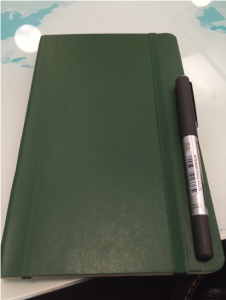 I put a picture of the notebook in the tweet! Of course I did.
I put a picture of the notebook in the tweet! Of course I did.
First day.
Last day. (for now / I remain as hopeful as can be for a return but journey for now in this role from my little backyard shed which is a different kind of museum)
Something emerged as I sat with confusion and the feeling of being overwhelmed and no idea whatsoever what it could look or feel like. A poetic queer history in published form. There was so much ahead to explore through public workshops, events, working with other queer artists, a launch looming, which I wanted to write something creative for, rainbow trails to undertake all with my chief co-collaborator Dr Jana Funke.
I asked myself: what could I absorb or learn or get inspired by on that first day? (not knowing it was only to be one day at the time) The museum is bursting at the seems with possibilities and I was looking at it with my queer lens on, hoping to discover its LGBTQ+ heritage and connections to LGBTQ+ lives.
The museum isn’t hugely visibly queer at a first glance, and so I decided to let go of any major revelations on that first day. Instead I decided to listen in to it. Its spaces. Its architecture. The collections on display. Paintings on walls that I had seen, but not seen if you know what I mean.
Of course it wasn’t my first time at RAMM. I have spent hours, days in the museum in all kinds of contexts and ways. I live in Exeter and I am frequently there for meetings, to write or plan or work or through projects I am collaborating on. I have even performed in the museum to a live audience whilst parading queer icons and that doesn’t happen very often.
I’ve gone there for solace for solitude for fun to look to share. All of those things, including chasing after small children in my family who ask so many questions whilst holding onto your hand as they pass stuffed animals with big teeth. Asking why.
This was demanding me to look in a new way as the beginnings of all new projects do so I had to sit with this. Understanding that patience would be required.
We’d all just really started to pay attention to Covid-19 and I had on my walk in to town tried five shops to get some hand gel. I was unsuccessful until the last one where I managed to get two small 50ml containers. Underestimating the potency of that moment at the time as there have been so many other milestones since hand gel sales went nuts, and clear hand washing and singing along instructions made us smile. At the time. Not now.
Back then. Back then we didn’t really know what this virus might do. Could do.
I’m looking back now of course to around two months ago. Before the virus really framed everything, before lockdown changed everything.
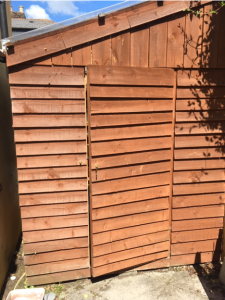 Now I am sat in my shed that is big enough for one person to work in typing away at this, revising and revisiting that moment. I suppose a slow dance for two could take place in here, but that’s for another day.
Now I am sat in my shed that is big enough for one person to work in typing away at this, revising and revisiting that moment. I suppose a slow dance for two could take place in here, but that’s for another day.
Did anything connect with me on that day?
What did I see that I hadn’t seen before through this art of ‘active looking’, not to mean I hadn’t actively looked before. I was a different kind of looker inner now. A participant in the museum’s narrative and someone who would be contributing to it.
No pressure then!
These are some of the things I wrote down:
DYKE Education
Q: How queer were the Romans?
The Slate Pencil Sea Urchin
What hands held flint first if the hands held at all?
Who wore that dress?
A rainbow lace campaign
Gothic facades for clandestine meetings
All sounds pretty queer to me. Don’t you think? No? Look again. When you can.
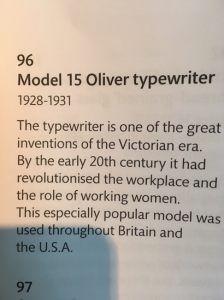
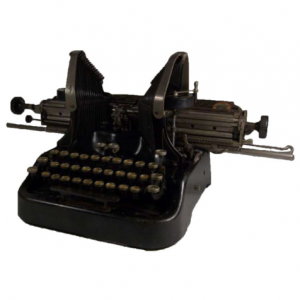
Then I was stopped in my tracks by an Oliver Typewriter. Upstairs gallery on the bridge overlooking the atrium next to the cafe. Head running through my inner map of the museum.
I’d never noticed it before and it is probably typical that as writer I clocked something to write with as their first object of note from the collections. The irony hasn’t passed me by.
I thought about it and who might have used it and what typewriters queer writers had used in the past and who were those writers in the first place. What did they write and were they published, read and known about. I will share more about this is a series of queering of objects from a digital distance postings over the coming weeks.
Me looking for something to write about for the launch of the project only over a week away back then. The launch that never happened. I think about the people that didn’t gather with us to mark the beginnings of this queering the museum project.
Still. In that moment it was a portal into looking in a new way. A way of conjuring as that is often what we have to do as queer folk isn’t it. Conjure. As we aren’t visibly often there or seen or acknowledged or we have been erased from the narrative. So I will be doing a lot of conjuring and re-imaging and re-arranging of narratives along the way. I hope it will be startling and revealing. Marking and celebrating queer lives and endeavours.
Later on in the day I went to Exeter Pride’s 2020 launch party and we were raucous in Gandy Street at Coolings for just one last time, shouting out loud that we were unashamed as this years hashtag exclaims.
Exeter Pride was cancelled shortly after this event, but Pride itself remains and I know the event will make a return. We have been working behind the scenes, readjusting to the challenges of not being able to run any of our live events such as a RAMM Late and the launch, and working in person in the museum with all the groups we had planned to work with. New things for the wider project are now emerging.
And once we reignite our live queering the museum through its various strands, including of course me being writer in residence. I remain firmly proud to be undertaking this work and I hope you will join me along the way.
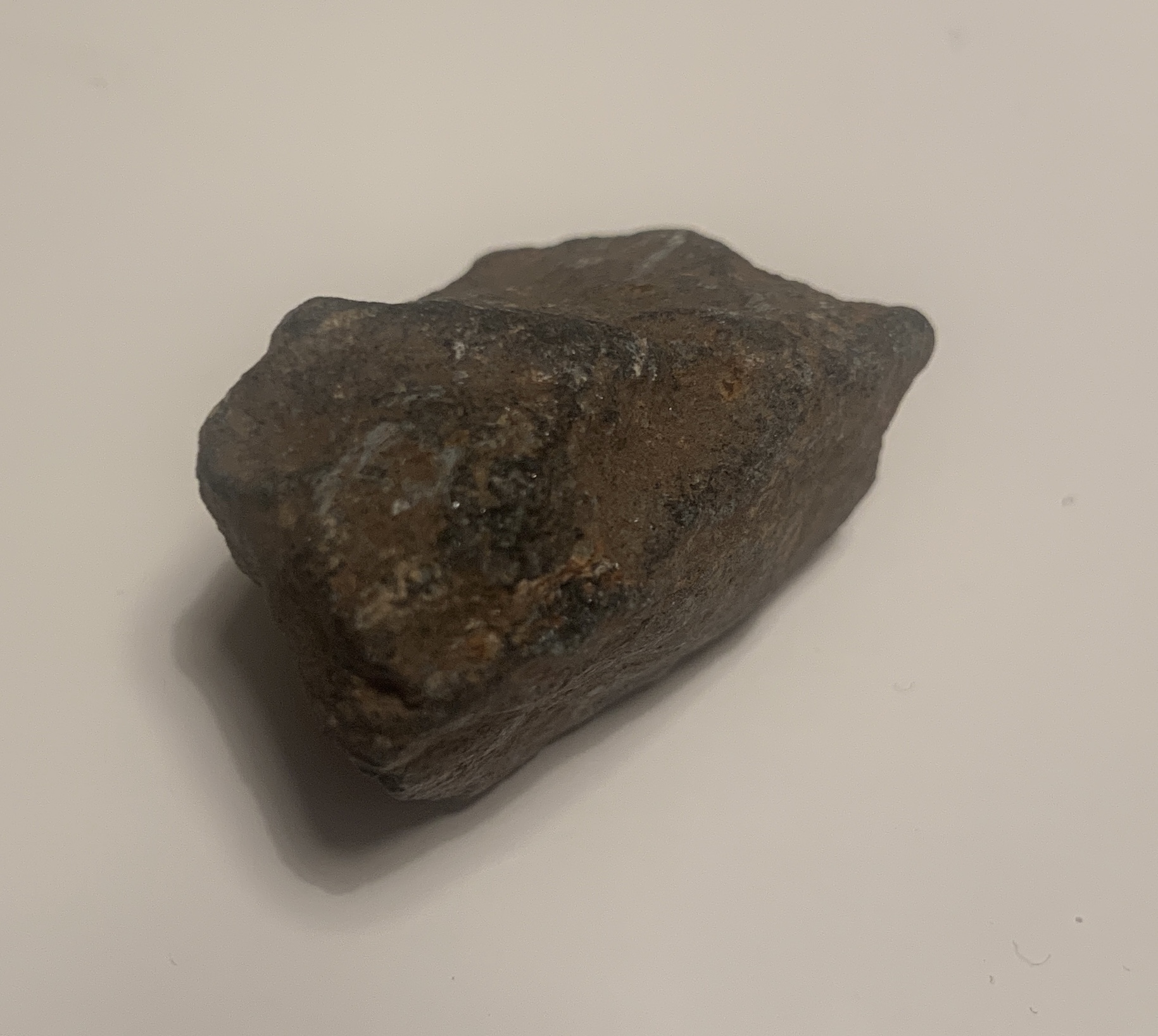 I found this little rock when visiting Zennor, a tiny coastal village in Cornwall. The bisexual American author H.D. (Hilda Doolittle) met her life-long partner Bryher here in 1918. You can still follow in H.D.’s footsteps and go on the absolutely stunning Zennor Head coastal walk today.
I found this little rock when visiting Zennor, a tiny coastal village in Cornwall. The bisexual American author H.D. (Hilda Doolittle) met her life-long partner Bryher here in 1918. You can still follow in H.D.’s footsteps and go on the absolutely stunning Zennor Head coastal walk today.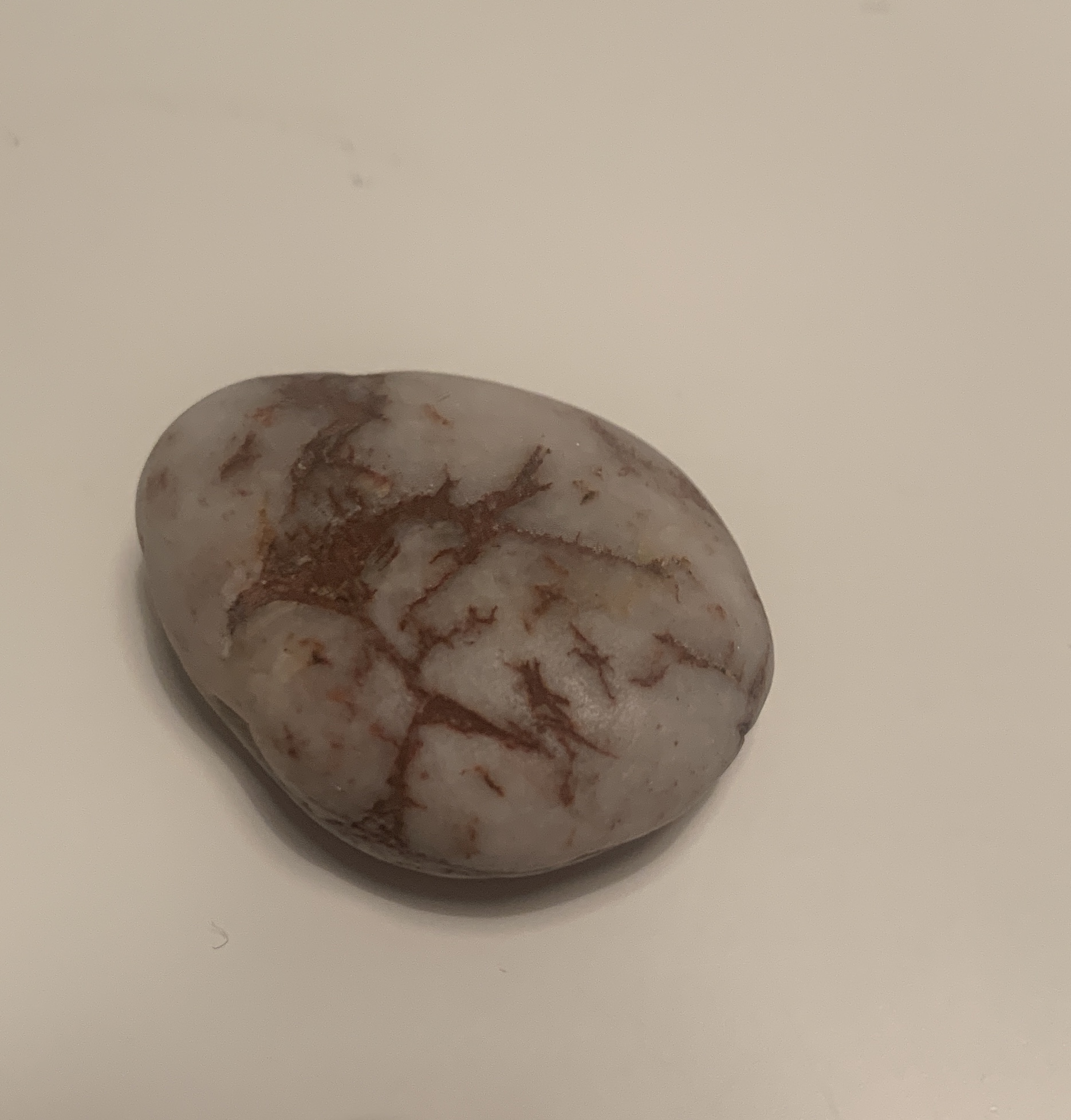 I picked up this pebble on the beach at Burgh Island, a small tidal island in South Devon. English author Radclyffe Hall visited the island, and it inspired one of Hall’s short stories called “Miss Ogilvy Finds Herself” (1934). The short story deals with queer and trans themes and features a fantastical moment of queer time travel that takes place on the island!
I picked up this pebble on the beach at Burgh Island, a small tidal island in South Devon. English author Radclyffe Hall visited the island, and it inspired one of Hall’s short stories called “Miss Ogilvy Finds Herself” (1934). The short story deals with queer and trans themes and features a fantastical moment of queer time travel that takes place on the island!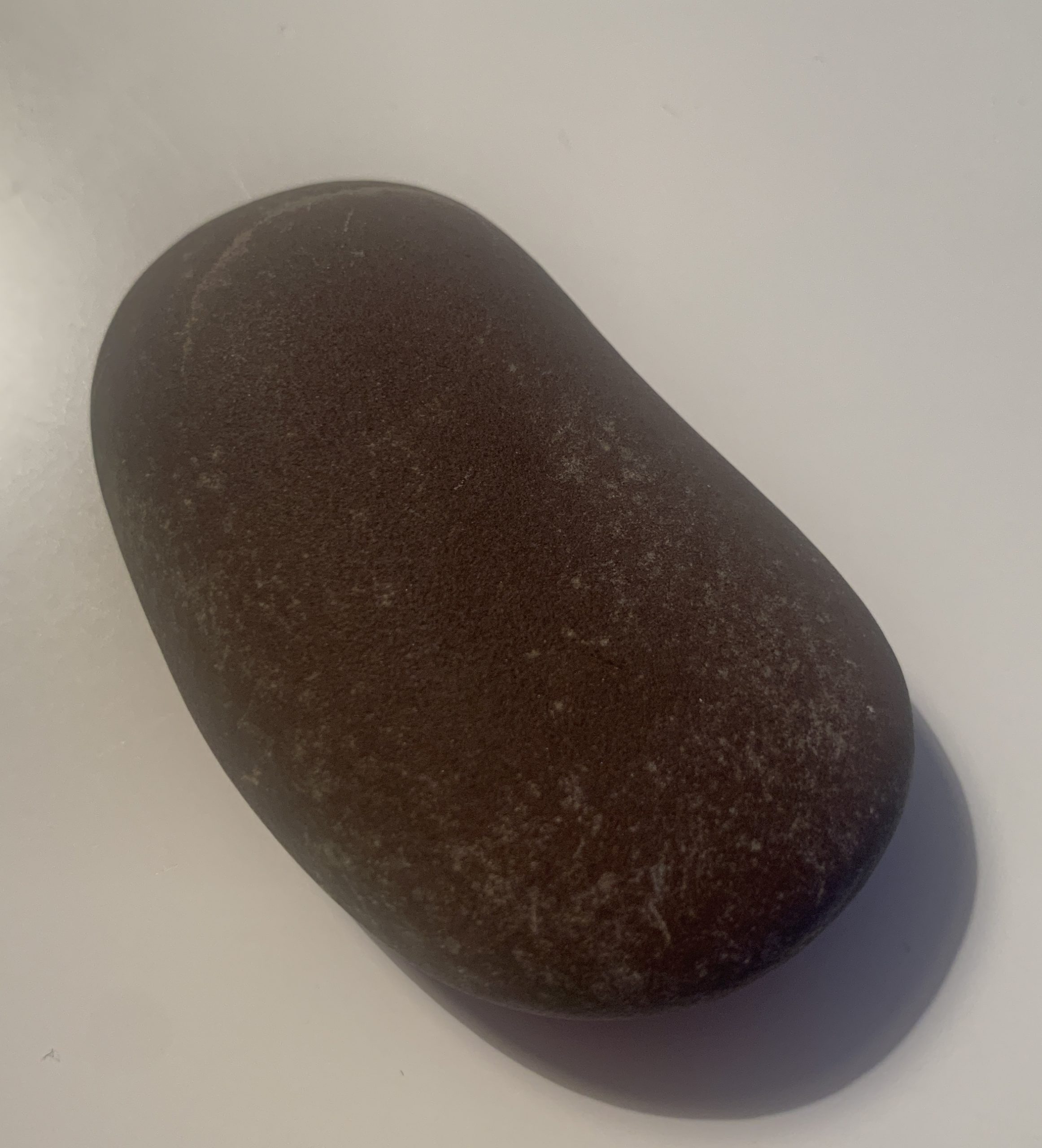 Finally, here is a stone I found outside Bucks Mills cabin, where artists Mary Stella Edwards and Judith Ackland used to spent their summers from the 1920s to the 1970s. The tiny cabin is at the very edge of the fishing hamlet and overlooks the coast. A peak through the window suggests that it hasn’t changed much since the two women spent their last summer here together. The RAMM hold several of Edwards’s and Acklands’s paintings, so we will be doing more work on the couple as part of our project.
Finally, here is a stone I found outside Bucks Mills cabin, where artists Mary Stella Edwards and Judith Ackland used to spent their summers from the 1920s to the 1970s. The tiny cabin is at the very edge of the fishing hamlet and overlooks the coast. A peak through the window suggests that it hasn’t changed much since the two women spent their last summer here together. The RAMM hold several of Edwards’s and Acklands’s paintings, so we will be doing more work on the couple as part of our project.
 I put a picture of the notebook in the tweet! Of course I did.
I put a picture of the notebook in the tweet! Of course I did. Now I am sat in my shed that is big enough for one person to work in typing away at this, revising and revisiting that moment. I suppose a slow dance for two could take place in here, but that’s for another day.
Now I am sat in my shed that is big enough for one person to work in typing away at this, revising and revisiting that moment. I suppose a slow dance for two could take place in here, but that’s for another day.
